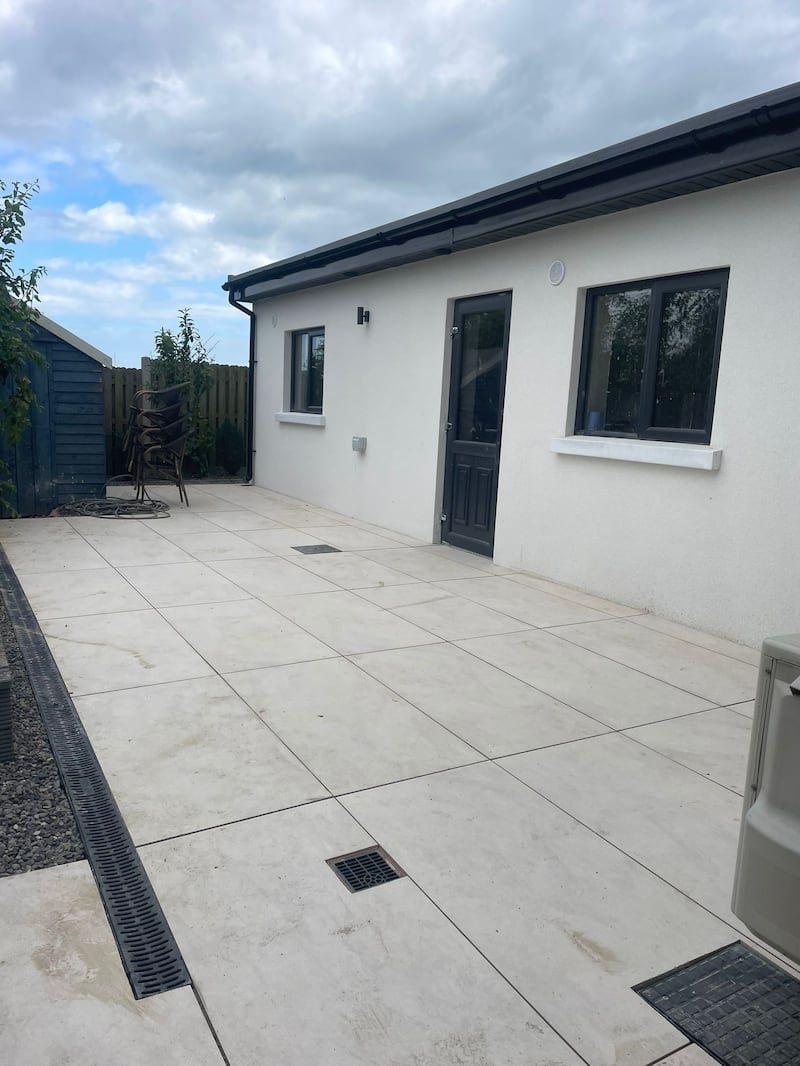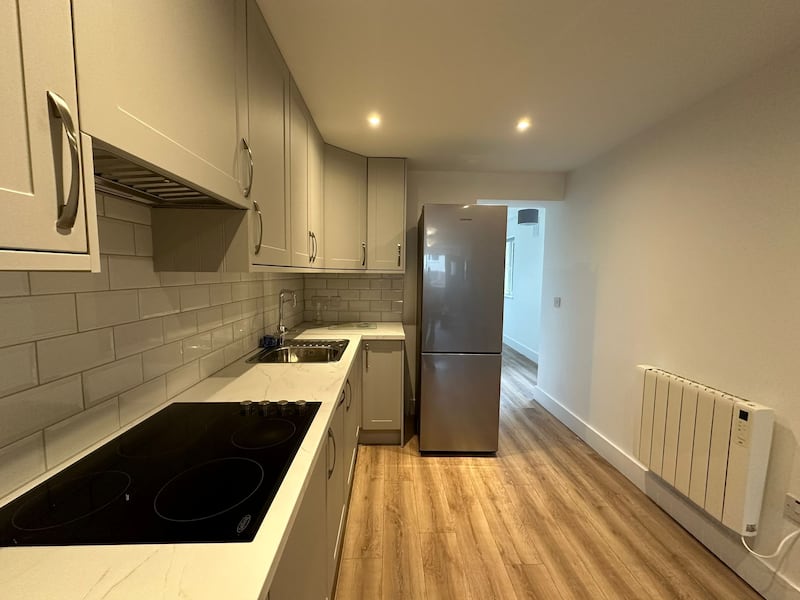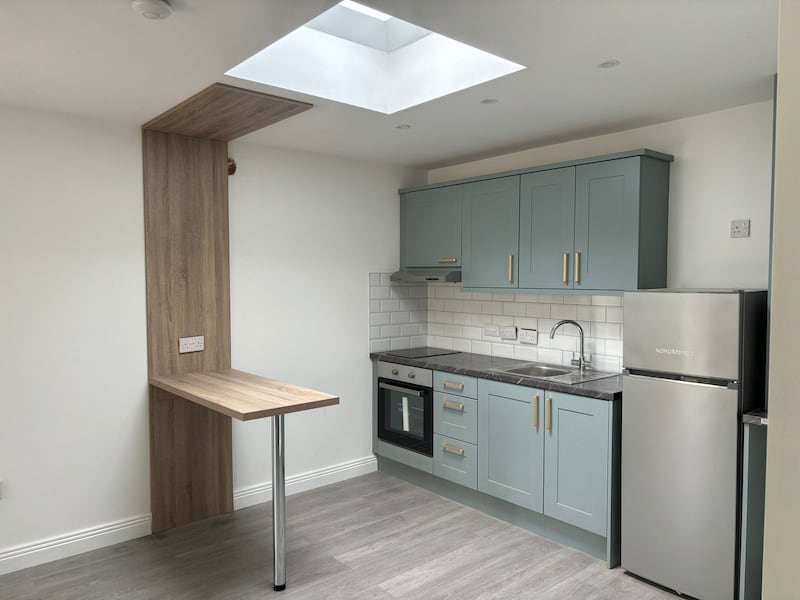Do you have a young adult struggling to find accommodation or an elderly family member who needs to be close while also requiring their own space? Or perhaps you could do with some extra income.
A “granny flat” could be a solution. A self-contained unit attached as an extension to a house can unlock potential to meet a household’s evolving needs.
Traditionally used to accommodate older relatives, granny flats can house family members of all ages as well as guests and paying lodgers. Retirees and first-time buyers are seeing the value in converting an existing garage into accommodation or building a new unit on a plot of their garden with the aim of providing rental accommodation to supplement their income.
Done right, the granny flat could provide a rental home for someone and tax-free income for the homeowner.
On the market
Homes with a granny flat or annexe are attracting increasing interest, estate agents say. Number 17 Oscar Square – a three-bed, two-bath home in the Tenters for sale for €595,000 – is an example.
Just off its diningroom is an interconnecting door that leads to an annexe to the side. The unit has its own front door too, and a small courtyard to the rear. In the garden there is a utility room.
The homeowner didn’t rent the unit out, but with teenage children, she enjoyed this separate space herself, says estate agent Mary Doran of DNG.
“It would make an ideal granny flat or a private space for a teenager,” she says.
The property is close to the city centre and the profile of those viewing it is 80 per cent first-time buyers, “scrambling to get out of the rental market”, says Doran. They can see the potential for the annexe as a work-from-home space, with the flexibility to rent it out to help with mortgage repayments. Banks can be more amenable to lending for property with the potential to rent a room, too. Studios in Dublin 8 rent from €1,450, listings show.
Number 71 Ludford Road, Ballinteer, marketed at €725,000, is another example of a home with granny-flat potential. To the side of this three-bed semi-D, a garage has been converted into a home office with skylights overhead and a guest bathroom to the rear. It has French doors to the front.
“It could easily be used as an additional living area or converted into a granny flat,” says agent Bronwen Barry of Sherry FitzGerald. One-bed, one bath apartments in the area rent from €1,650.
[ Could granny flats offer a sustainable, €70,000 solution to the housing shortage?Opens in new window ]
On the redbrick roads of Dublin 6, you’ll find granny flats too. The rental income from one freshly refurbished one-bed granny flat with a small kitchenette, at €1,900 a month, could be earmarked by the owner for renovations to the recently purchased main home. Rental income provides a buffer against interest rate rises too.
“If you lost your job in the morning, you have that extra space rented out where you can earn up to €14,000 a year tax-free,” says Doran. “That can go towards the cost of your mortgage which is an extra layer of security.”
Elsewhere in the city, a one-bed, one-bath own-door granny flat in Glasnevin is listed for rent at €1,100. Heating is included, electricity is not. With two single beds, the homeowner may have term-time tenants such as students of DCU or Trinity.
Building on

The typical customer building a granny flat is changing, says Lee Ryan of Leixlip-based grannyflats.ie. Her clients now range from homeowners accommodating young adult offspring to first-time buyers seeking a rental income stream, as well as the usual downsizers.
“My typical customers at the moment are people who have adult kids. The adult child might be living in an apartment and they can’t see a way forward [out of the renting],” says Ryan.
[ Renting out a room: ‘I feel safer at night having someone else in the house’Opens in new window ]
The homeowners are mostly aged 70-plus and living in the Dublin area. Their homes are from an era when dwellings were built bigger, on a bigger plot, perhaps with a garage.
Sometimes it suits the parents themselves to move into the granny flat. They want a smaller home in the same neighbourhood, adapted for the next stage of their lives, says Ryan. Housing options for that are limited in the market. A granny flat built to their specification means they move, but stay put.
Where downsizing homeowners move into an adjoining granny flat, in Ryan’s experience, it has been family members who move into the main house. The main house can’t be sold separately to the granny flat structure, either. “The granny flat is an extension of the main house. It’s not a separate home with its own title deeds,” she says.


More young homeowners are building granny flats, too. “Plenty of young couples are adding something on to the back of their house, a small self-contained studio just for rental,” says Ryan.
“We are doing a lot of brand-new houses where the gardens are relatively small, but couples are thinking, ‘We can change it up in a few years and turn it into an extension for ourselves.’”
The cost of building a granny flat ranges from €65,000 plus VAT for the smallest 25sq m studio, to €82,000 plus VAT for a 35sq m one-bed apartment. That includes kitchen and bathroom fitout, flooring, tiling and painting, Ryan says.
Regulations on granny flats differ by local authority, so consult a planning expert before beginning construction.
Reliefs and eligibility
You can earn up to €14,000 a year tax-free if you rent out a room or rooms in your home. This includes self-contained units attached to your house such as a basement flat or a converted garage. Importantly, if the unit is not attached to the property, it won’t qualify for the relief.
That €14,000 must include all charges made by the landlord to the tenant including the cost of any additional services such as utilities or laundry, according to Revenue. If the income exceeds €14,000, the total amount is taxed.
People renting out a room or rooms in their own home are not required to register with the Residential Tenancies Board (RTB). However, would-be granny flat owners should note that renting out a self-contained unit attached to your home or a separate structure in your garden comes with many of the same responsibilities as being a landlord of an entirely separate property.
Firstly, you must register the tenancy with the RTB every year at a cost of €40. Landlords who do not register a tenancy can be fined up to €4,000. The RTB can share your data with the Department of Social Protection and with Revenue.
In addition, the accommodation must meet minimum physical standards. As a rental unit, it must include a four-ring hob with oven or grill, an extractor fan, a fridge-freezer, a microwave, and, of course, adequate heating. Owners must provide access to a washing machine and clothes dryer if there is no private outside space. All of which the owners will have to budget for maintaining over time.
If the self-contained flat or apartment was originally part of the main house, you can choose to opt out of the RTB requirement that gives tenants the right to stay in the accommodation for a set amount of time. You must give the tenant notice in writing before the start of the tenancy, however, if you want to opt out.
If your granny flat is a separate structure to your home and was not originally part of the main house, when renting it out, a tenant will have a right to stay indefinitely once they have been in situ for six months. You can issue a notice of termination only if you need the property for your own use, you are selling up or you are doing substantial refurbishment. Then, notice periods apply, depending on the length of time the tenant has been in situ.
Also, to claim Rent a Room tax relief on a unit attached your property, the tenants you rent to must use the room on a long-term basis, meaning they live there for more than 28 days in a row.
For example, renting a room to a student for the academic year or for a one-month course is covered, but providing accommodation to occasional visitors for short periods, through sites such as Airbnb for example, is not. This income is not considered to be rental income and those using the property are guests rather than tenants.
[ Falling outside rules on rent-a-room scheme can prove costlyOpens in new window ]
If you normally rent out the room for the academic year but rent it out for short breaks during the summer too, you must identify the income you get from the short rentals separately from the income that qualifies for rent-a-room relief when making your tax return.
Money earned through renting an annexe to your home could go a long way towards covering your mortgage, or indeed enabling you to pay it down early. Not every unit will command the maximum amount you can earn tax-free, which is €1,666 a month, but even some of that can make a big dent in your mortgage repayment.
*This article was amended at 7pm on October 17th, 2024




















